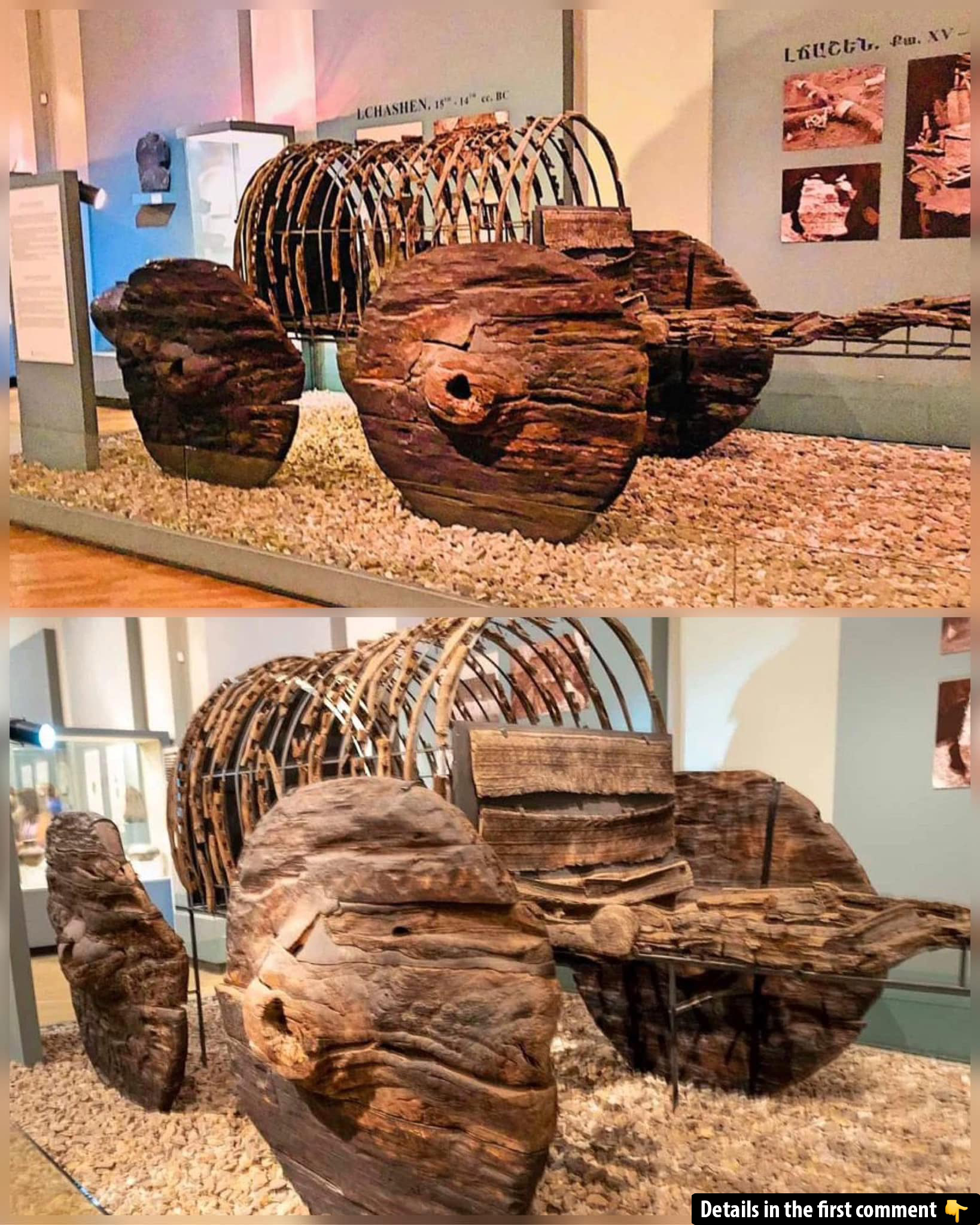The Lchashen Wagon, unearthed in Armenia in 1956, is a marvel of ancient engineering that provides a rare glimpse into the early Iron Age. This remarkably preserved wooden relic, discovered near Lake Sevan, challenges the usual notion of how ancient societies utilized transportation. Made of oak and reinforced with bronze, the wagon is not only a testament to the craftsmanship of its creators but also a vital piece of history that unveils the technological and cultural advancements of an ancient civilization.
The Discovery of the Lchashen Wagon
The story of the Lchashen Wagon began when Soviet archaeologists were excavating the Lchashen cemetery in Armenia. The cemetery, located near Lake Sevan, had been exposed as the water levels in the lake dropped due to Soviet irrigation projects. This shift uncovered a rich archaeological site filled with burial mounds and artifacts that date back to the Bronze and Iron Ages. Among these findings, the Lchashen Wagon stood out as one of the most significant and well-preserved relics from this period.
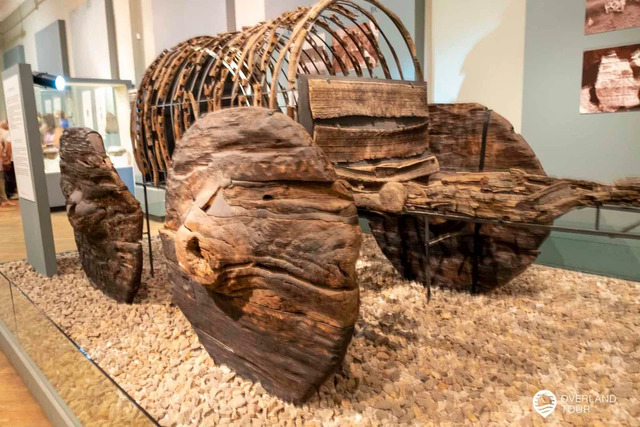
The wagon, believed to date back to the 15th-14th centuries BC, was discovered intact, offering an unprecedented look at the technological capabilities of early Armenian society. Situated in the region known as the Lchashen-Metsamor culture, the site provided valuable insights into the socio-economic and cultural dynamics of the time. The wagon itself, constructed primarily from oak wood and reinforced with bronze, speaks volumes about the craftsmanship of the people who made it and their sophisticated understanding of both materials and engineering.
Video
Check out the video on 4,000-year-old wagons – a fascinating glimpse into ancient transportation!
The Wagon’s Construction and Design
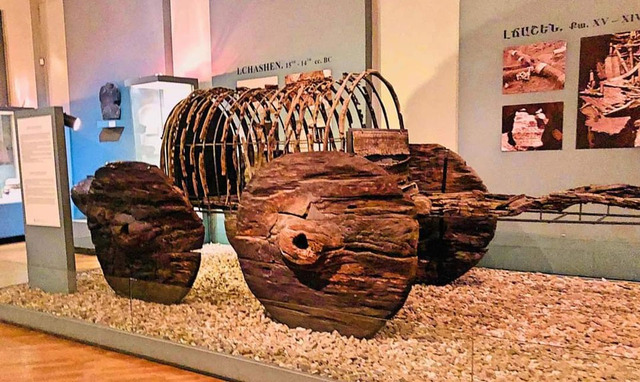
The Lchashen Wagon is an exceptional example of early engineering. Measuring approximately 2 meters (6.5 feet) in length, the wagon was designed to withstand the challenges of travel over rough terrain. Its frame is constructed from sturdy oak beams, intricately joined together to provide both strength and flexibility. The wheels, also made of oak, feature bronze hubs and rims, ensuring durability and the ability to bear heavy loads. The use of bronze in the construction of the wagon is particularly noteworthy. Not only did it serve a functional role in reinforcing the structure, but it also adds an aesthetic dimension to the vehicle, highlighting the metallurgical skills of its creators.
The wagon’s design was clearly aimed at functionality, with a solid, durable structure that could endure the rigors of travel. The use of bronze hubs and rims suggests that the creators of the Lchashen Wagon understood the importance of reinforcing their vehicles for long-distance travel. The wagon likely played a significant role in trade, transportation of goods, and possibly even the movement of people. Its construction represents a level of sophistication that challenges earlier assumptions about the technological capabilities of ancient societies in the region.
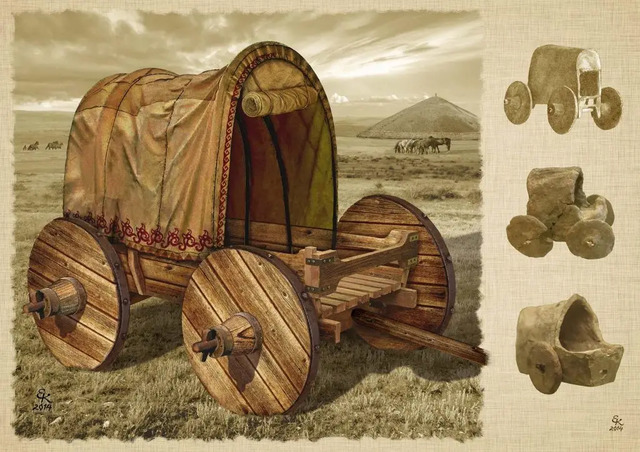
Artistic and Decorative Features
What sets the Lchashen Wagon apart from other ancient transportation relics is the intricate artistry embedded in its design. Extensive research has shown that parts of the wagon were adorned with carvings and geometric patterns, many of which include animal motifs. These decorative elements are not just ornamental; they also provide insight into the cultural and symbolic beliefs of the people who crafted them. Such artwork suggests that the wagon may have belonged to a high-status individual, possibly a local ruler or a person of significant importance.
The carvings on the wagon’s wooden surfaces reflect the artistic sensibilities of the time. Geometric patterns and animal motifs were not just a form of artistic expression but also served as cultural markers, representing the values and beliefs of the ancient Armenians. The presence of such detailed artwork on a utilitarian object like a wagon speaks to the importance of art and symbolism in the daily lives of these early people. It demonstrates that even in practical items, such as transportation vehicles, beauty and cultural significance were prioritized.
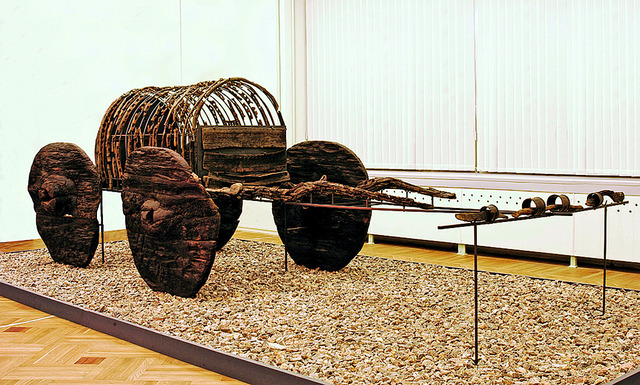
Implications for Ancient Transportation and Trade
The discovery of the Lchashen Wagon has far-reaching implications for our understanding of ancient transportation methods. Wagons such as this one were not just tools for personal use; they were critical components of a broader economic and trade network. The existence of such a sophisticated vehicle suggests that the region had developed extensive trade routes, facilitating the exchange of goods and ideas. This points to a level of social and economic organization that goes beyond the mere subsistence level and hints at the complexity of ancient Armenian society.
The Lchashen Wagon is not an isolated find; it is part of a larger archaeological context that includes other wagons and transportation-related artifacts. The presence of multiple wagons in the region further supports the idea that transportation played a central role in the daily life and economy of the Lchashen-Metsamor culture. The ability to create durable and functional vehicles would have been crucial for the movement of goods, people, and resources, contributing to the economic prosperity of the area.
The Wagon and Its Cultural Context
The discovery of the Lchashen Wagon also offers valuable insights into the funerary practices of the ancient Armenians. Given its context within the Lchashen cemetery, it is likely that the wagon was a burial gift for a person of high status. This practice of burying individuals with items meant for use in the afterlife was common in many ancient cultures. The wagon, in this case, may have been intended for use in the afterlife, symbolizing the importance of transportation and mobility in the belief system of the ancient Armenians.
The burial context of the Lchashen Wagon adds another layer of meaning to its discovery. It provides a window into the spiritual and cultural beliefs of the time, shedding light on the ways in which ancient societies viewed death and the afterlife. The fact that such a sophisticated object was buried with an individual suggests that mobility and status were important aspects of life, both in the physical world and in the spiritual realm.
Technological Achievements and Metallurgical Insights
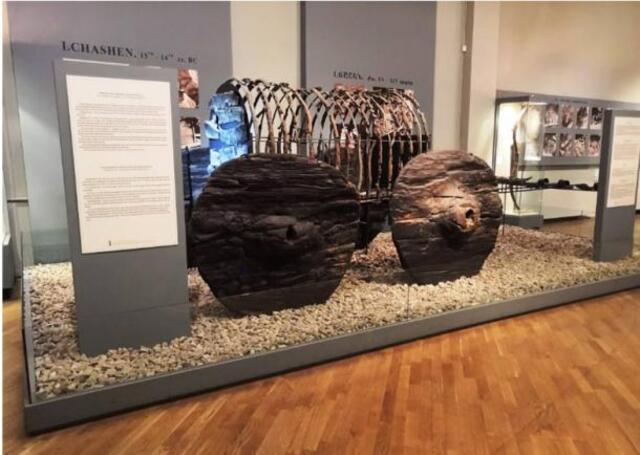
The integration of bronze into the design of the Lchashen Wagon is particularly significant. It highlights the advanced metallurgical skills of the ancient Armenians and their ability to work with different materials to create functional, durable, and aesthetically pleasing objects. The use of bronze hubs and rims on the wheels, as well as decorative bronze elements, suggests that the creators of the wagon had access to advanced technology and trade networks that allowed them to acquire and work with this valuable material.
The craftsmanship demonstrated in the construction of the Lchashen Wagon is a testament to the technological achievements of the Lchashen-Metsamor culture. It underscores the importance of metallurgy and woodworking in ancient Armenian society and highlights the intricate knowledge of materials and design that was passed down through generations.
The Legacy of the Lchashen Wagon
The Lchashen Wagon is more than just an artifact; it is a symbol of the technological, cultural, and artistic achievements of ancient Armenia. Its discovery has provided archaeologists with invaluable insights into the transportation methods, trade practices, and social dynamics of the early Iron Age. The Lchashen Wagon stands as a testament to the ingenuity and resourcefulness of the ancient Armenians, offering a window into a world that has long since passed.
Today, the Lchashen Wagon is displayed in the History Museum of Armenia, where it continues to captivate visitors and scholars alike. Its remarkable preservation and the wealth of information it provides about ancient Armenian society make it one of the most important archaeological finds in recent history. As we continue to uncover the mysteries of the past, the Lchashen Wagon serves as a reminder of the enduring legacy of ancient cultures and their contributions to the development of human civilization.
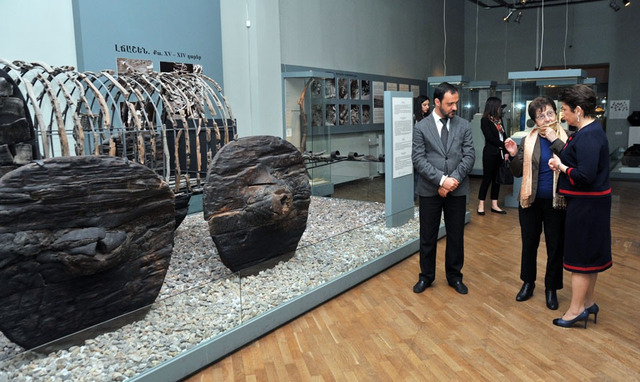
Video
Watch the video on an artist building a 20-hectare castle in Karst Valley, Southwest China – it’s an incredible feat of creativity!
Conclusion: Preserving the Past
The Lchashen Wagon is a remarkable example of ancient craftsmanship and ingenuity. Its discovery has shed light on the technological advancements of the early Iron Age and has provided valuable insights into the daily lives, trade networks, and cultural practices of the Lchashen-Metsamor culture.
As we continue to study this extraordinary artifact, it is clear that the Lchashen Wagon offers a unique opportunity to explore the past and understand the complexities of ancient societies. Its preservation serves as a reminder of the resilience and creativity of our ancestors, who left behind a legacy that continues to shape our understanding of history today.
